- Home
- John Updike
Higher Gossip Page 14
Higher Gossip Read online
Page 14
However, I am not sure it perfectly works, this chess puzzle pieced out with human characters. In the last third of the book, the author’s youth may begin to show; émigré parties, arranged by Mrs. Luhzin, are introduced apparently for no better reason (not a bad reason) than that Nabokov was going to such parties at this time. A “mercifully stupid” Leningrad visitor pops up irrelevantly, as a naked index of editorial distaste for the Soviet regime. It is as if Pawns were proliferating to plug a leaky problem. One becomes conscious of rather aimless intricacies: the chronic mention of a one-armed schoolmate (Nabokov’s teasing of cripples is not the most sympathetic of his fads) and the somewhat mannered withholding of the hero’s first name and patronymic until the last sentences, which then link up with the first. In short, the novel loses inevitability as it needs it most. Suicide, being one experience no writer or reader has quite undergone, requires extra credentials to pass into belief. I can believe in the suicides of Anna Karenina and Emma Bovary as terrible but just—in the sense of “fitting”—events within the worlds the authors have evolved. I am even more willing to believe in Kirillov’s suicide in The Possessed as the outcome of a philosophic-psychotic mental state explored with frightening empathy. But I am unable to feel Luzhin’s descent into an eternity of “dark and pale squares” as anything but the foreordained outcome of an abstract scheme, cutting short a fictional life.
To me, the hero’s development seems blocked by something outside the novel, perhaps by the lepidopterist’s habit of killing what it loves; how remarkably few, after all, of Nabokov’s characters do evade the mounting pin! Certainly his energetic passion for half-concealed symmetries and extended patterns of imagery has here, in a novel about chess, a fitting field of display. Metaphor and matter merge, if not quite as cunningly and persuasively as the master intended, yet astoundingly and beautifully enough. The idyllic boyhood and the lost Russia which Nabokov was to transmute a number of more times in the future receive, in the myopic recollections of his lovable “chess moron,” one of their freshest evocations. Every detail of the vanished St. Petersburg is precious as little Luzhin, in Chapter Three, hurries along to the house of his red-haired aunt—the irregular paving-stones of Sergievskaya Street, the “frizzled heads of three waxen ladies with pink nostrils” in a hairdresser’s window, the plum-colored house “with naked old men straining to hold up a balcony,” the gate’s “spurstone showing the white marks of pigeons.” The excited precision attached to these images is both that of a boy hastening to his first chess assignation and that of a writer experiencing his still-unfolding powers. This verbal joy, this tender efflorescence of verbal happiness, was to occur again, twenty years later, in the English of Speak, Memory and Pnin, as Nabokov consolidated his virtuosic control of his adopted language. An innocence of youthful exuberance flavors the Rus-sian tale of Luzhin, along with a matured taste for monstrous difficulty; for those who have yet to enter the unique Nabokovian universe, The Luzhin Defense forms an excellent way in.
Introduction to The Best American Short Stories of the Century,
edited by John Updike with Katrina Kenison
THESE STORIES have been four times selected. First, they were selected for publication, against steep odds. Story reports twenty thousand submissions a year, Ploughshares 750 a month, The New Yorker five hundred a week. Next, published stories—now amounting annually, Katrina Kenison tells us in her foreword, to three thousand, from over three hundred American journals—were sifted for the annual volumes of the Best American Short Stories of the Year. The eighty-four volumes since 1915 held a total of two thousand stories; Ms. Kenison read all these and gave me more than two hundred; I asked to read several dozen more. Of this third selection I have selected, with her gracious advice and counsel, these fifty-five—less than one in four. A fathomless ocean of rejection and exclusion surrounds this brave little flotilla, the best of the best.
Certain authors had to be included, that was clear from the outset. An anthology of this century’s short fiction that lacked a story by Hemingway, Faulkner, or Fitzgerald would be perversely deficient. Almost as compulsory, I felt, was the female trio of Katherine Anne Porter, Flannery O’Connor, and Eudora Welty. Of post-war writers, there had to be Bellow, Roth, and Malamud, even though only Malamud could be said to have devoted a major portion of his energy to the short story. If John O’Hara and Mary McCarthy—two Irish-Americans with a sociological bent—had been available, I might have included them, but neither ever made a Best. Traditionally, in the compilation of this annual short-story collection, excerpts from a larger work are excluded, though some do creep in; among my choices were a pair, by Jack Kerouac and William Goyen, that turned out to be pieces of novels.
Two personal principles, invented for the occasion, guided me. First, I wanted this selection to reflect the century, with each decade given roughly equal weight—what amounted to between six and eight stories per decade. As it turned out, the 1950s, with the last-minute elimination of Peter Taylor’s “A Wife of Nashville” and James Baldwin’s “Sonny’s Blues,” were shortchanged, even though it was a healthy decade for short fiction, just before television’s fabulations took center stage. My second rule, enforcing the reflection of an American reality, was to exclude any story that did not take place on this continent or deal with characters from the United States or Anglophone Canada. This would seem to exclude little, and yet in Ms. Kenison’s selection I encountered a story about Russian soldiery in World War I (“Chautonville,” by Will Levington Comfort), another taking place in a polygamous Chinese household (“The Kitchen Gods,” by Gulielma Fell Alsop), one involving Gypsies near the Black Sea (“The Death of Murdo,” by Konrad Bercovici), a supernatural tale of a woodchopper in New Spain (“The Third Guest,” by B. Traven), another of a Czech concert violinist (“The Listener,” by John Berry), one set in an African village (“The Hill People,” by Elizabeth Marshall), one concerning a magician from nineteenth-century Bratislava (“Eisenheim the Illusionist,” by Steven Millhauser), a linked set of Elizabethan epistles dealing with the death of Christopher Marlowe (“A Great Reckoning in a Little Room,” by Geoffrey Bush), an astringent account of a Danish semi-orphan (“The Forest,” by Ella Leffland), a story beginning “In Munich are many men who look like weasels” (“The Schreuderspitze,” by Mark Helprin), several stories of Irish life by Maeve Brennan and Mary Lavin, a lyrical tale of arranged marriage among the Parisian bourgeoisie (“Across the Bridge,” by Mavis Gallant), and a deeply feminist, humorously epic account of how a few Latin American women inhabited Antarctica and reached the South Pole some years before Amundsen did (“Sur,” by Ursula K. Le Guin). All these are not here. “ ‘That in Aleppo Once…,’ ” by Vladimir Nabokov, and “The Shawl,” by Cynthia Ozick, are here, on the weak excuse that some of their characters are on the way (unknowingly, in Ozick’s case) to America.
Immigration is a central strand in America’s collective story, and the first two stories in my selection, Benjamin Rosenblatt’s “Zelig” and Mary Lerner’s “Little Selves,” deal with the immigrant experience—Jewish in the first case, Irish in the second. The third, Susan Glaspell’s “A Jury of Her Peers,” portrays the rural life, one of drudgery and isolation, that was once the common lot and is currently experienced by a mere 1 percent of the population, who feed the rest of us—one of the more remarkable shifts the century has witnessed.
The 1920s, which open here with Sherwood Anderson (“The Other Woman”), are a decade with a distinct personality, fixed between the onset of Prohibition in 1920 and the stock-market crash of 1929 and marked by a new sharpness and vivacity, a jazzy American note, in style and in the arts. The urban minority of Americans that produced most of the writing felt superior if not hostile to what H. L. Mencken called the “booboisie,” whose votes had brought on Prohibition, puritanical censorship, the Scopes trial, and Calvin Coolidge. Members of the prospering middle class figure as objects of satire in the fiction of Sinclair Lewis and Ring Lardner, though since bot
h men were sons of the booster-driven Midwest the satire is more affectionate than it first seemed. Lardner’s “The Golden Honeymoon” is almost surreal in the circumstantiality of its monologue, a veritable lode of data as to how a certain class of Easterner managed a Florida vacation. The device of the self-incriminating narrator—used here more subtly and gently than in Lardner’s better-known “Haircut”—generates a characteriology of American types not to be confused with the author, who may well be sitting at a Paris café table in happy expatriation. Except in stories based on his boyhood, Hemingway couldn’t bear to dwell on life in America. It was, for many, a drab, workaday life. The small town or city surrounded by farmland, adrift in a post-Calvinist dreaminess, with the local doctor the closest thing to a hero, is a venue ubiquitous in this period’s fiction, not only in Anderson and Lewis but in the “Summit” of Hemingway’s chilling yet (with its boy narrator) faintly Penrodian “The Killers,” and in the Pittsburgh named in Willa Cather’s “Double Birthday,” a great city as cozy and in-turned as a Southern hamlet.
Provincial smugness and bewilderment cease to be quite so urgent a theme in the Depression-darkened Thirties. Dorothy Parker’s “Here We Are” hovers above its honeymooning couple as if not knowing whether to smile or weep. The heroine of Katherine Anne Porter’s “Theft” faces without self-pity the waste of her life amid the passing, predatory contacts of the city. This is a boom period for the short story, a heyday of Story and The American Mercury. With an exuberant, cocky sweep William Saroyan (“Resurrection of a Life”) sums up in a few headlong paragraphs the religious mystery, “somehow deathless,” of being alive; William Faulkner (“That Evening Sun Go Down”) and Robert Penn Warren (“Christmas Gift”) impart to their Southern microcosms the scope and accumulated intensity of a novelist’s vision. Faulkner had previously tucked the dénouement of “That Evening Sun” into his 1929 novel, The Sound and the Fury. Though he was a staple of Best American Short Story collections, represented almost annually in the 1930s, there seemed no avoiding this particular masterpiece, his most anthologized tale, a minimally rhetorical conjuration of impending doom. Fitzgerald’s “Crazy Sunday,” a knowing, dishevelled tale of Hollywood, took preference, narrowly, over his more familiar “Babylon Revisited,” a rueful reprise of the Twenties’ expatriate culture. Alexander Godin’s “My Dead Brother Comes to America” revisits the experience of immigration in a tone of amplifying remembrance that anticipates magic realism. The longest story in these pages, and perhaps the most melodramatic, is Richard Wright’s “Bright and Morning Star,” a relic of a painful time when American blacks could see their lone friend and best hope in the Communist Party. The African-American has inhabited, and to a lamentable degree still inhabits, another country within the United States, where most white signposts of security and stability are absent. I have tried to give this country representation, from Jean Toomer’s “Blood-Burning Moon” of 1923 to Carolyn Ferrell’s “Proper Library” of 1994. Had space permitted, stories by James Baldwin and Ann Petry would have added to the picture’s many tints of violence and despair. Even the amiable, detached Ivy Leaguer of James Alan McPherson’s “Gold Coast” finds himself, in the end, on the losing side of a racial divide.
I tried not to select stories because they illustrated a theme or portion of the national experience but because they struck me as lively, beautiful, believable, and, in the human news they brought, important. The temptations of the illustrative pulled strongest in the early decades, which were basically historical for me—the times of my fathers. With the 1940s, the times become my own, and the short story takes an inward turn, away from states of society toward states of mind. To an elusive but felt extent, facts become more enigmatic. It is no longer always clear what the author wants us to feel. The short-story writer has gone into competition with the poet, asking the same charged economy of his images as the narrator of The Waste Land, whose narrative lay in shards.
Small-town coziness, with its rules and repressions, is absent from the seething but listless town visited by Eudora Welty’s travelling salesman in “The Hitch-Hikers.” He thinks of himself: “He is free: helpless.” Welty, though habitually linked with her fellow-Mississippian Faulkner, here appears more a disciple of Hemingway, and a sister of Flannery O’Connor, the queen of redneck Gothic. Free equals helpless: our American freedom—to thrive, to fail, to hit the road—has a bleak and bitter underside, a noir awareness of ultimate pointlessness that haunts as well the big-city protagonists of Jean Stafford’s “The Interior Castle” and E. B. White’s “The Second Tree from the Corner.” White’s story, incidentally, marks the earliest appearance in my selection of The New Yorker, which was founded in 1925. Its editors, White’s wife, Katharine, foremost, sought for its fiction a light, quick, unforced, casual quality that was slow to catch on with Best American Short Stories and that, however telling in its magazine setting, stacks up as slight against earthier, more strenuous stories. The New Yorker might have run, but didn’t, Elizabeth Bishop’s crystalline “The Farmer’s Children,” an almost unbearably brilliant fable in which farm machinery and Canadian cold become emissaries of an infernal universe; only a poet of genius and a child of misery could have coined this set of wounding, glittering images.
All was not noir: from the bleakest of bases, Paul Horgan’s “The Peach Stone” builds to a redemptive affirmation, and Vladimir Nabokov, portraying the refugee chaos and panic on the edge of Hitler’s war, imports into English an early sample of his unique legerdemain. It surprised me that World War II, that all-consuming paroxysm, left so meagre a trace in the fiction of this decade, as selected by others. Perhaps it takes time for great events to sift into art; however, I remember magazines of the Forties as being full of stories from the camps and the fronts—many of them no doubt too sentimental and jocular for our taste, but functioning as bulletins to the home front. On request, Ms. Kenison came up with several, including Edward Fenton’s harrowing “Burial in the Desert,” which depicts the North African campaign’s harvest of corpses. In the end only Martha Gellhorn’s account of an unsatisfactory flirtation, “Miami–New York,” conveyed to me the feel of wartime America—the pervasive dislocation that included erotic opportunity, constant weariness, and contagious recklessness.
The Fifties, though underrepresented, are represented handsomely, with two of the century’s supreme masters of the short story, John Cheever and Flannery O’Connor. They occupied different parts of one country, of the society, and of the literary world, yet were similar in the authority with which they swiftly built their fictional castles right on the edge of the absurd. They wrote with an inspired compression and heightened clarity; their prose brooked no contradiction or timid withholding of belief. Both were religious—O’Connor, fated to die young, fiercely so—and transcendent currents, perhaps, enabled them to light up their characters like paper lanterns, to impart an electric momentum to their narratives, and to situate human misadventure in a crackling moral context. Both “Greenleaf” and “The Country Husband” display animals—a bull, a dog—as spiritual presences; J. F. Powers’s “Death of a Favorite” is told by a cat. The effect is not frivolous. For Powers, like O’Connor a Catholic, the mundane, heavily politicized celibate life of male priests was a serious and all but exclusive obsession. Few story-writers of high merit have staked so narrow a territory. And why, the reader may ask, with so many thoroughly crafted works to choose from, have I included a thinly fictionalized piece that drifts off into ellipses and appeared in the ephemeral, chichi Flair? Well, there are some grave turnings caught in the courtly diffidence of Tennessee Williams’s “The Resemblance Between a Violin Case and a Coffin.” The narrator, though fearing “that this story will seem to be losing itself like a path that has climbed a hill and then lost itself in an overgrowth of brambles,” comes to the double realization that his sister is mentally ill and that he is gay. Overall, there were fewer stories of gay experience than I had expected—not many were written, I think, before 1970 o
r so—but more about music and its performance: Phillip Lopate’s “The Chamber Music Evening” and Charles Baxter’s “Harmony of the World” were especially fine and heartfelt, and it pained me to lack space for them.
The Sixties, at least until President Kennedy was assassinated in 1963 and perhaps until President Johnson deepened our Vietnam commitment in 1965, were a scarcely distinguishable extension of the Fifties. In any case, while looking to fiction to mirror its time, we must remember that writers generally write through a number of decades and gather their formative impressions in decades earlier still. Saul Bellow’s world, for example, remains essentially a Thirties world of scramble and survival. “The Ledge,” by Lawrence Sargent Hall, is timeless—a naturalistic anecdote terrible in its tidal simplicity and inexorability, fatally weighted in every detail. Philip Roth’s “Defender of the Faith” looks back to the time of World War II, as does Bernard Malamud’s “The German Refugee.” Roth’s story, written by a man too young to have served, has the authentic khaki texture and unfolds with a layered irony that would have been hard to muster in 1945. The Malamud was chosen, after some dithering, over his famous “The Magic Barrel”; less fantastic, beginning like a small anecdote, “The German Refugee” ends surprisingly and powerfully, with Malamud’s sense of Jewishness as a mystical force founded on suffering. Jewishness! What would post-war American fiction be without it—its color, its sharp eye, its colloquial verve, its comic passions, its exuberant plaintiveness? Stanley Elkin rarely knew when to stop, and “Criers and Kibitzers, Kibitzers and Criers” could be shorter, beginning with its title. But it gives us what seldom gets into fiction, the taste and texture of doing business, the daily mercenary pressures that compete with even the deepest personal grief for a man’s attention. No one could strike the Hebraic ethnic note more purely, with a more silvery touch, than the Yiddish writer Isaac Bashevis Singer. “The Key” fashions a religious epiphany, adorned with heavenly omens, from a distrustful old lady’s inadvertent night on the town. We are reminded of Chagall and Bruno Schulz and the midnight ordeals of the Old Testament.

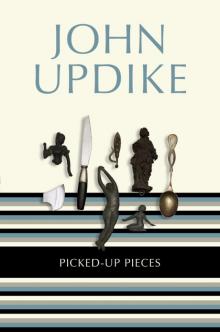 Picked-Up Pieces: Essays
Picked-Up Pieces: Essays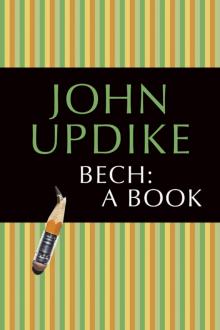 Bech: A Book
Bech: A Book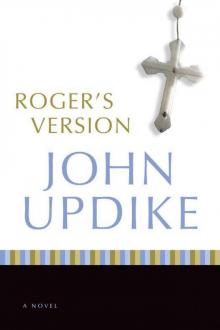 Roger's Version: A Novel
Roger's Version: A Novel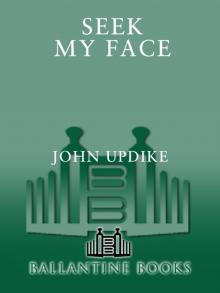 Seek My Face
Seek My Face The Carpentered Hen
The Carpentered Hen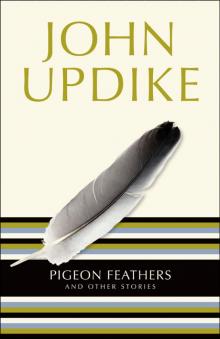 Pigeon Feathers: And Other Stories
Pigeon Feathers: And Other Stories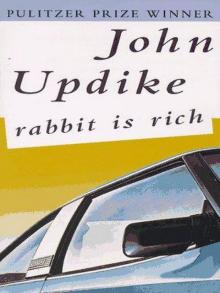 Rabbit Is Rich
Rabbit Is Rich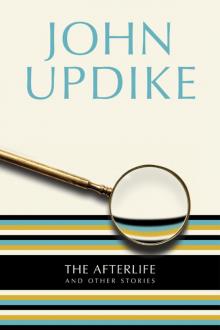 The Afterlife: And Other Stories
The Afterlife: And Other Stories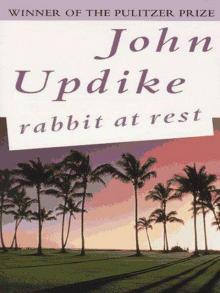 Rabbit at Rest
Rabbit at Rest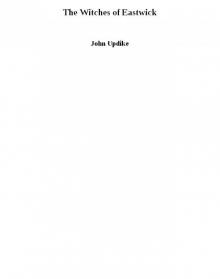 The Witches of Eastwick
The Witches of Eastwick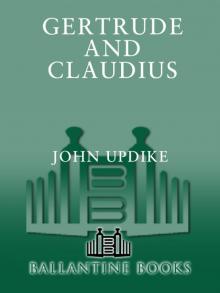 Gertrude and Claudius
Gertrude and Claudius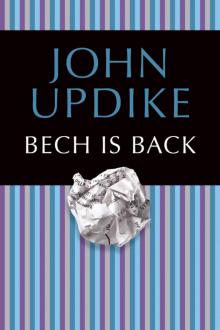 Bech Is Back
Bech Is Back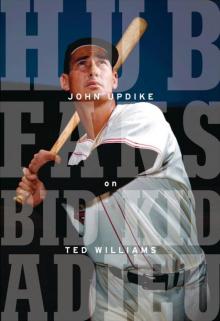 Hub Fans Bid Kid Adieu: John Updike on Ted Williams
Hub Fans Bid Kid Adieu: John Updike on Ted Williams Marry Me: A Romance
Marry Me: A Romance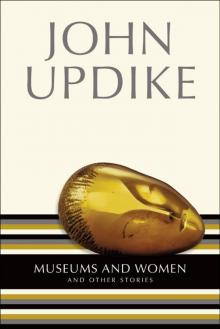 Museums and Women: And Other Stories
Museums and Women: And Other Stories My Father's Tears and Other Stories
My Father's Tears and Other Stories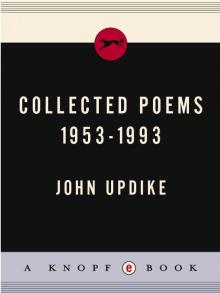 Collected Poems, 1953-1993
Collected Poems, 1953-1993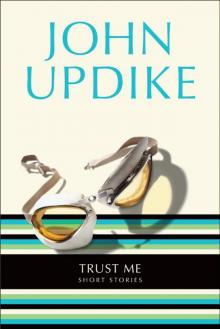 Trust Me: Short Stories
Trust Me: Short Stories Odd Jobs: Essays and Criticism
Odd Jobs: Essays and Criticism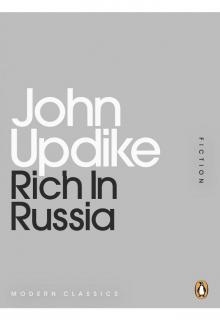 Rich in Russia
Rich in Russia Higher Gossip: Essays and Criticism
Higher Gossip: Essays and Criticism The Widows of Eastwick
The Widows of Eastwick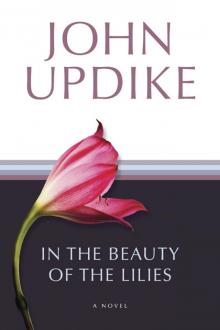 In the Beauty of the Lilies
In the Beauty of the Lilies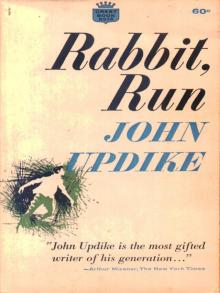 Rabbit, Run
Rabbit, Run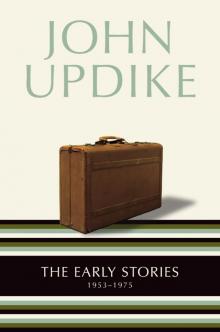 The Early Stories: 1953-1975
The Early Stories: 1953-1975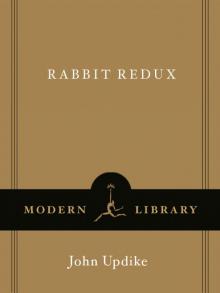 Rabbit Redux
Rabbit Redux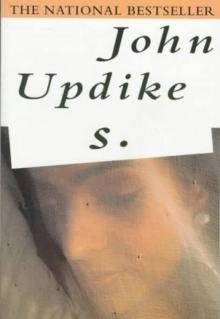 S.
S.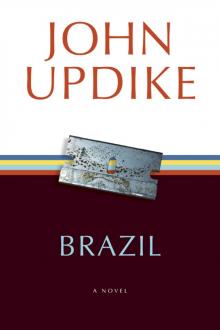 Brazil
Brazil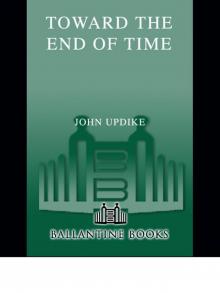 Toward the End of Time
Toward the End of Time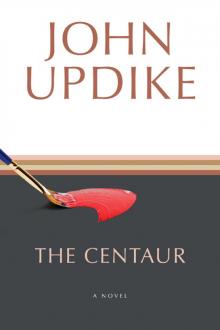 The Centaur: A Novel
The Centaur: A Novel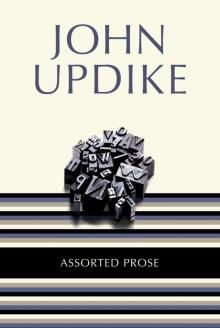 Assorted Prose
Assorted Prose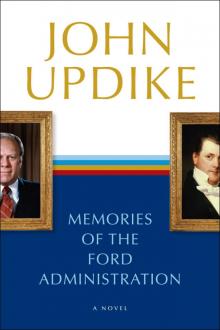 Memories of the Ford Administration
Memories of the Ford Administration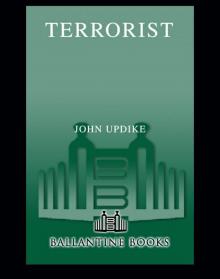 Terrorist
Terrorist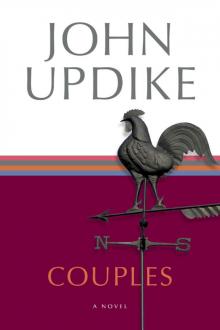 Couples: A Novel
Couples: A Novel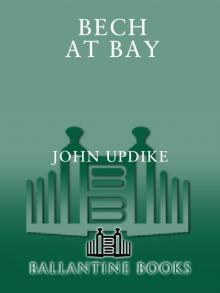 Bech at Bay
Bech at Bay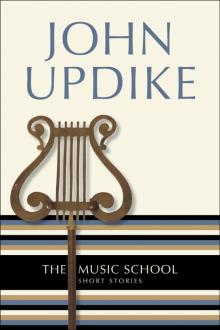 The Music School: Short Stories
The Music School: Short Stories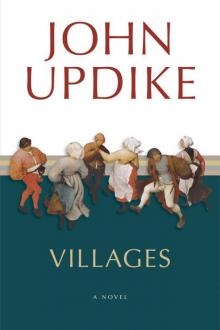 Villages
Villages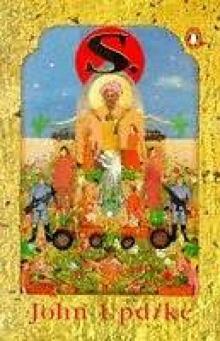 S
S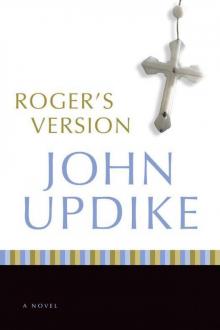 Roger's Version
Roger's Version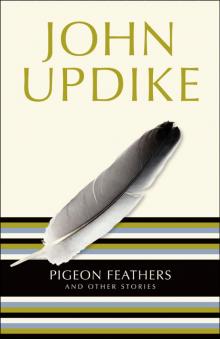 Pigeon Feathers
Pigeon Feathers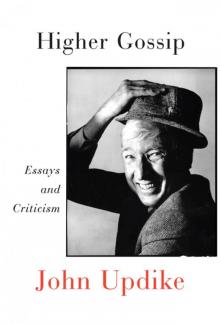 Higher Gossip
Higher Gossip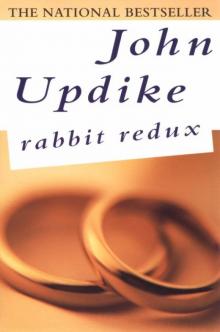 Rabbit Redux r-2
Rabbit Redux r-2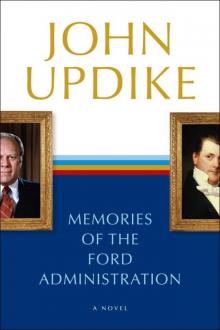 Memories of the Ford Administration: A Novel
Memories of the Ford Administration: A Novel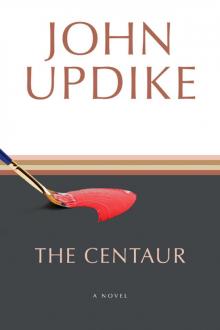 The Centaur
The Centaur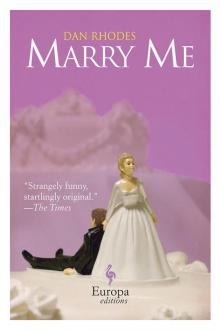 Marry Me
Marry Me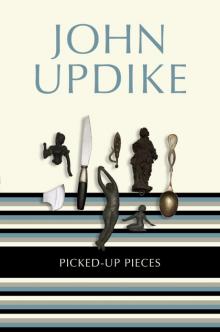 Picked-Up Pieces
Picked-Up Pieces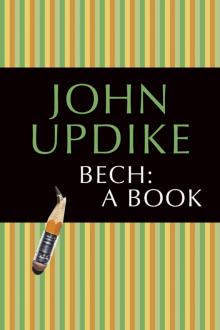 Bech
Bech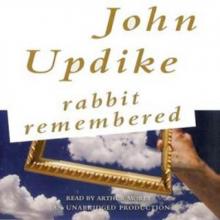 Rabbit Remembered
Rabbit Remembered Trust Me
Trust Me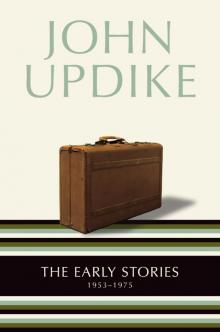 The Early Stories
The Early Stories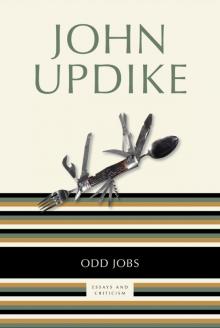 Odd Jobs
Odd Jobs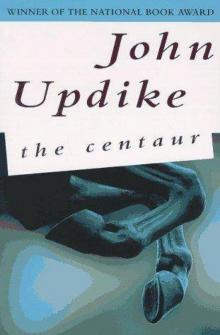 The Centaurus
The Centaurus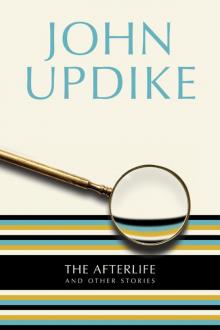 The Afterlife
The Afterlife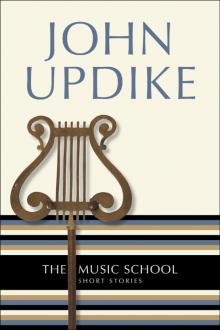 The Music School
The Music School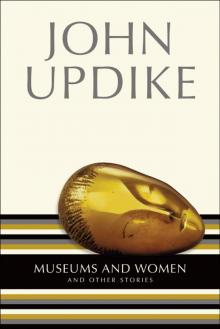 Museums and Women
Museums and Women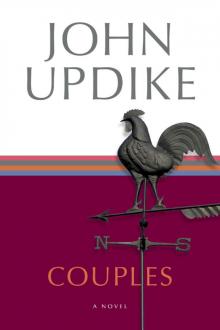 Couples
Couples